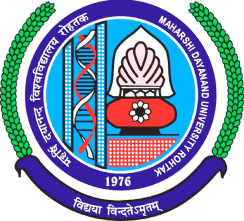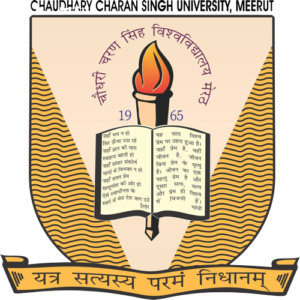
B.Sc. in Textile Design: Admission Process, Eligibility Criteria, Course Fees, Subject, Syllabus, Duration, Scope, F&Q.
B.Sc. in Textile Design Overview:
- Duration:
- The program typically spans three to four years, depending on the educational institution and the specific curriculum.
- Curriculum:
- Foundation Courses: These may include courses in drawing, design principles, and color theory to provide students with a solid artistic foundation.
- Textile Design Courses: Core courses cover various aspects of textile design, including fabric structure, surface ornamentation, and textile printing techniques.
- Technology in Textile Design: Students learn to use design software, computer-aided design (CAD) tools, and other technologies relevant to the field.
- Textile Materials: Understanding different types of fibers, yarns, and fabrics is crucial, as it influences the design and production processes.
- Fashion and Trends: Courses may explore current fashion trends, historical influences, and market demands to prepare students for real-world applications.
- Practical Training:
- Workshops and Labs: Hands-on experience in workshops and labs allows students to experiment with various textile techniques, machinery, and materials.
- Internships: Some programs may require or provide opportunities for internships, allowing students to gain practical experience in the industry.
- Project Work:
- Many programs include project-based assignments where students create their own textile designs, from concept to execution.
- Portfolio Development:
- Students often compile a portfolio showcasing their best work throughout the program. This is important for job applications and advancing to higher education or professional opportunities.
- Career Opportunities:
- Graduates can pursue careers in various industries, including fashion design, interior design, textile manufacturing, and retail. Job roles may include textile designer, pattern designer, colorist, and more.
- Advanced Studies:
- Some graduates choose to pursue advanced studies, such as a Master’s in Textile Design or related fields, to specialize further and enhance career prospects.
- Skills Development:
- Students develop a range of skills, including creative thinking, drawing, computer-aided design, pattern making, and an understanding of the textile industry.
- Industry Collaboration:
- Programs may collaborate with industry professionals, inviting guest lectures, organizing field trips, and providing exposure to the current demands of the market.
B.Sc. in Textile Design Eligibility:
- Educational Qualifications:
- Candidates should have completed their higher secondary education or its equivalent from a recognized board or educational institution.
- A common requirement is having passed the 10+2 examination with a background in arts, science, or commerce. Some institutions may have specific subject requirements, such as having studied art or design-related subjects.
- Minimum Percentage:
- Many institutions have a minimum percentage requirement for admission. This percentage can vary, but it is typically in the range of 50% to 60% in the qualifying examination.
- Entrance Exams:
- Some universities and colleges may conduct entrance exams as part of the admission process for their B.Sc. Textile Design program. The entrance exams may assess the candidate’s aptitude, creativity, and knowledge in relevant subjects.
- Portfolio Submission:
- In addition to academic qualifications and entrance exams, some institutions may require candidates to submit a portfolio showcasing their artistic and creative work. This portfolio can include drawings, designs, and any relevant projects that demonstrate the candidate’s potential in the field of textile design.
- Interviews or Group Discussions:
- Some institutions may conduct interviews or group discussions as part of the admission process. This allows the admission committee to assess the candidate’s communication skills, motivation, and suitability for the program.
- Language Proficiency:
- Proficiency in the language of instruction (often English) may be required. This can be demonstrated through standardized language proficiency tests like IELTS or TOEFL, especially for international students.
- Age Limit:
- Some institutions may have age restrictions for admission, and candidates are typically required to meet the age criteria specified by the university or college.
B.Sc. in Textile Design Why to do?
- Creative Expression:
- Textile design is a field that allows for artistic expression. If you have a passion for creativity, love working with colors, patterns, and textures, and enjoy translating your ideas into tangible designs, a B.Sc. in Textile Design provides a platform for such artistic endeavors.
- Versatility in Career Options:
- Graduates in Textile Design have diverse career paths. They can work in the fashion industry, interior design, home furnishings, textile manufacturing, and more. The versatility of the degree allows individuals to explore various sectors and roles based on their interests.
- Contribution to Fashion Industry:
- Textile designers play a crucial role in the fashion industry. They are responsible for creating unique patterns, prints, and fabrics that set fashion trends. If you have an interest in fashion and a desire to contribute to the ever-changing world of style, textile design is a suitable career path.
- Industry-Relevant Skills:
- The B.Sc. in Textile Design equips students with practical skills, including using design software, understanding textile materials, and hands-on experience with various techniques. These skills are directly applicable to the industry and make graduates well-prepared for the workforce.
- Innovation in Textile Technology:
- The field of textile design is evolving with technological advancements. Students in this program often get exposure to the latest textile technologies, including digital printing, sustainable practices, and smart textiles. This focus on innovation prepares graduates for the modern demands of the industry.
- Global Opportunities:
- The textile industry is global, and professionals in textile design have the opportunity to work on an international scale. This can be appealing for individuals who are interested in exploring diverse markets and collaborating with designers from around the world.
- Sustainable Design Practices:
- With growing awareness of environmental issues, there is an increasing demand for sustainable and eco-friendly practices in the textile industry. Textile design programs often include discussions on sustainable design, giving students the knowledge and skills to contribute to environmentally conscious practices.
- Entrepreneurial Opportunities:
- Some graduates may choose to start their own businesses, whether in designing and selling their textile creations, establishing a boutique, or venturing into sustainable and ethical fashion. The entrepreneurial aspect of the field allows for creativity and independence.
- Job Satisfaction:
- For individuals passionate about design and textiles, working in a field that aligns with their interests can lead to high job satisfaction. The ability to see one’s designs come to life and make an impact in various industries can be personally fulfilling.
- Continuous Learning and Adaptation:
- The dynamic nature of the textile industry requires professionals to stay updated with the latest trends, technologies, and consumer preferences. This ongoing learning process keeps the work engaging and ensures that professionals remain relevant in the industry.
B.Sc. in Textile Design Highlights:
Aspect | Details |
Degree Offered | B.Sc. in Textile Design |
Duration | 3 to 4 years (varies by institution) |
Eligibility | 10+2 or equivalent with a minimum percentage |
Entrance Exams | May be required in some institutions |
Curriculum | – Foundation Courses (drawing, design principles) |
– Textile Design Courses (fabric structure, etc.) | |
– Technology in Textile Design | |
– Textile Materials | |
– Fashion and Trends | |
Practical Training | – Workshops and Labs |
– Internships (optional or mandatory) | |
Project Work | – Project-based assignments |
Portfolio Development | – Compilation of artistic work |
Career Opportunities | – Textile Designer |
– Pattern Designer | |
– Colorist | |
– Opportunities in fashion, interior design, etc. | |
Advanced Studies | – Master’s in Textile Design (optional) |
Skills Development | – Creative thinking, drawing, CAD skills |
Industry Collaboration | – Guest lectures, field trips, exposure to market |
Language Proficiency | – Proficiency in the language of instruction (e.g., English) |
Age Limit | – Some institutions may have age restrictions |
Global Opportunities | – Potential for international career paths |
Innovation Focus | – Exposure to the latest textile technologies |
Sustainable Practices | – Emphasis on eco-friendly and sustainable design |
Entrepreneurial Opportunities | – Potential for starting one’s own business |
Job Satisfaction | – High satisfaction for those passionate about design and textiles |
Continuous Learning | – Need for staying updated with industry trends |
B.Sc. in Textile Design Admission Process:
- Meet Eligibility Criteria:
- Ensure that you meet the minimum eligibility criteria set by the university or college. This typically includes completing your higher secondary education or its equivalent with a certain minimum percentage.
- Research Institutions:
- Explore and research different institutions that offer a B.Sc. in Textile Design. Consider factors such as the reputation of the institution, faculty expertise, available facilities, and the overall curriculum.
- Application Form:
- Obtain and fill out the application form for the B.Sc. in Textile Design program. This form is usually available on the official website of the respective institution. Ensure that you provide accurate and complete information.
- Entrance Exams (if applicable):
- Some institutions may require candidates to take entrance exams to assess their aptitude, creativity, and knowledge in relevant subjects. Prepare for and participate in any required entrance exams as per the institution’s guidelines.
- Portfolio Submission:
- Many institutions may require applicants to submit a portfolio showcasing their artistic and creative work. Include drawings, designs, and any relevant projects that highlight your skills and potential in the field of textile design.
- Entrance Interviews or Group Discussions:
- Participate in any entrance interviews or group discussions that may be part of the admission process. This step allows the admission committee to assess your communication skills, motivation, and suitability for the program.
- Language Proficiency Test (if applicable):
- If the language of instruction is not your first language, you may need to provide proof of language proficiency through standardized tests such as IELTS or TOEFL.
- Submission of Documents:
- Submit all required documents, including academic transcripts, certificates, identity proof, and any other documents specified by the institution.
- Application Fee:
- Pay the application fee as per the institution’s guidelines. This fee typically covers the processing of your application.
- Admission Decision:
- Once the application process is complete, the institution will review your application, including academic records, entrance exam results (if applicable), portfolio, and any other relevant factors. Admission decisions are then communicated to the applicants.
- Confirmation of Admission:
- If you receive an offer of admission, follow the institution’s instructions to confirm your acceptance. This may involve paying a confirmation fee.
- Enrollment:
- Complete the enrollment process, including any additional documentation and payment of fees required for securing your place in the program.
B.Sc. in Textile Design Top Colleges for the Course:
- National Institute of Fashion Technology (NIFT), New Delhi:
- NIFT is a premier fashion institute in India, and it is known for offering high-quality programs in fashion and textile design.
- Pearl Academy, New Delhi:
- Pearl Academy is a reputed design institute that provides courses in fashion, communication, business, and design, including textile design.
- National Institute of Design (NID), Ahmedabad:
- NID is renowned for its design programs, and it offers a diverse range of design courses, including those related to textiles.
- Srishti Institute of Art, Design, and Technology, Bangalore:
- Srishti is known for its interdisciplinary approach to design education. It offers various design programs, including those related to textiles and fashion.
- MIT Institute of Design (MITID), Pune:
- MITID is known for its design courses, and it offers programs in industrial design, communication design, and fashion design.
- Amity School of Fashion Technology, Noida:
- Amity University offers a B.Sc. in Textile Design as part of its fashion technology programs.
- Manipal Institute of Technology (MIT), Manipal:
- MIT offers a B.Tech in Fashion Technology, which includes aspects of textile design. It is part of the Manipal Academy of Higher Education.
- International Institute of Fashion Design (INIFD), Various Locations:
- INIFD has multiple centers across India and offers various design programs, including textile design.
- Wigan and Leigh College, New Delhi:
- Wigan and Leigh College offer design programs, and they have gained recognition in the field of fashion and textile education.
- JD Institute of Fashion Technology, Bangalore:
- JD Institute offers various design courses, and it is known for its focus on practical exposure and industry-relevant training.
B.Sc. in Textile Design Syllabus:
- Foundation Courses:
- Drawing and Illustration
- Design Fundamentals
- Color Theory
- Textile Design Core Courses:
- Fabric Structure and Analysis
- Surface Ornamentation Techniques
- Textile Printing
- Weaving and Knitting Techniques
- Dyeing and Finishing
- Technology in Textile Design:
- Computer-Aided Design (CAD) for Textile Design
- Digital Textile Printing Technology
- Textile Design Software Applications
- Textile Materials:
- Study of Fibers and Yarns
- Fabric Construction and Analysis
- Textile Testing and Quality Control
- Fashion and Trends:
- Fashion Studies
- Trend Forecasting
- History of Textiles and Fashion
- Professional Practice:
- Portfolio Development
- Industry Internship
- Project Work
- Elective Courses (Specializations):
- Specialized courses in areas such as fashion textiles, home textiles, or technical textiles.
- Entrepreneurship in Textile Design:
- Business Aspects of Textile Design
- Entrepreneurship in the Textile Industry
- Sustainable Textile Design:
- Sustainable Practices in Textile Design
- Eco-friendly Textile Design
- Research Methodology:
- Research Techniques in Textile Design
- Market Research in Textile Industry
- Soft Skills and Communication:
- Communication Skills
- Presentation Techniques
- Professional Ethics and Industry Standards:
- Ethics in Design
- Compliance and Standards in the Textile Industry
B.Sc. in Textile Design FAQ Answer with Question:
- Q: What is B.Sc. Textile Design?
A: B.Sc. Textile Design is an undergraduate degree program that focuses on the creative and technical aspects of designing textiles for various purposes, including fashion, home furnishings, and industrial applications.
- Q: What are the eligibility criteria for B.Sc. Textile Design?
A: Eligibility criteria typically include completing higher secondary education (10+2) or its equivalent with a minimum percentage. Specific requirements may vary among institutions.
- Q: Why should I pursue B.Sc. Textile Design?
A: B.Sc. Textile Design offers opportunities for creative expression, a versatile range of career options, and the chance to contribute to the fashion industry. It provides skills in design, technology, and sustainable practices.
- Q: What is the duration of the B.Sc. Textile Design program?
A: The program typically spans three to four years, depending on the institution and curriculum.
- Q: Are entrance exams required for admission to B.Sc. Textile Design programs?
A: Some institutions may require entrance exams to assess aptitude and creativity. However, requirements vary, and not all programs have entrance exams.
- Q: Can I pursue a Master’s degree after completing B.Sc. Textile Design?
A: Yes, graduates can pursue advanced studies such as a Master’s in Textile Design or related fields to further specialize and enhance career prospects.
- Q: What are the career opportunities after completing B.Sc. Textile Design?
A: Graduates can pursue careers as textile designers, pattern designers, colorists, and find opportunities in fashion design, interior design, textile manufacturing, and retail.
- Q: Is a portfolio submission required during the admission process?
A: Yes, many institutions require applicants to submit a portfolio showcasing their artistic and creative work, including drawings and designs.
- Q: What skills do students develop during B.Sc. Textile Design?
A: Students develop skills such as creative thinking, drawing, computer-aided design (CAD), pattern making, and an understanding of textile materials and technology.
- Q: Are there age restrictions for admission to B.Sc. Textile Design programs?
A: Some institutions may have age restrictions, and candidates are typically required to meet the age criteria specified by the university or college.
- Q: What is the role of technology in B.Sc. Textile Design?
A: Technology plays a significant role, with courses covering computer-aided design (CAD), digital textile printing, and exposure to the latest textile technologies.
- Q: Can graduates start their own businesses after completing B.Sc. Textile Design?
A: Yes, some graduates choose entrepreneurial paths, starting businesses related to textile and fashion design, boutiques, or ventures in sustainable and ethical fashion.

















